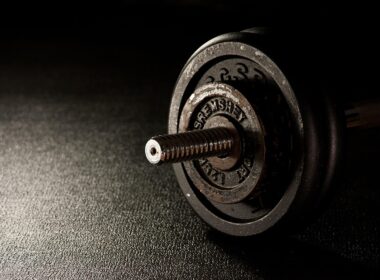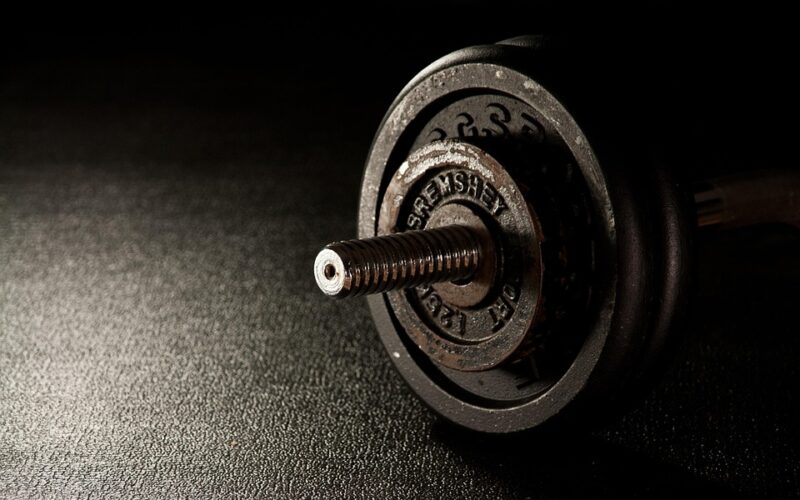Understanding Exercise Plateaus: What They Are and Why They Happen
Exercise plateaus can be frustrating for anyone dedicated to their fitness journey. A plateau occurs when you stop seeing progress in your workouts, whether it’s in muscle gains, weight loss, or endurance. This complex phenomenon can happen for several reasons, including adaptations your body makes to a specific exercise regimen, lack of variety in your routine, or even improper nutrition.
Primarily, your body adapts to the stresses you place on it. When you consistently follow the same routine, your muscles learn to perform those movements more efficiently, decreasing the challenge they present over time. This phenomenon is aligned with the principle of progressive overload, where you need to progressively make your workouts more challenging to continue seeing results.
Additionally, psychological factors can lead to plateaus as well. If you find yourself stuck in a rut, feeling demotivated can alter your perception of workouts and results, creating a negative feedback loop that stops progress. A lack of variety in routines can lead to both physical stagnation and mental boredom, making transitions into a more diverse workout plan essential.
Identifying Signs of a Plateau
Recognizing the signs of a plateau is the first step in overcoming it. Many may assume that a plateau merely means an absence of weight loss or muscle gain. However, signs can manifest in various ways, including:
-
Performance Decline: If you notice you’re lifting less weight or struggling to complete your usual number of repetitions, this could indicate you’re hitting a plateau.
-
Stagnant Measurements: For those focused on body composition, a lack of changes in waist, hip, and muscle measurements can point to stagnation.
-
Diminished Motivation: If you’re feeling less enthusiastic or find that working out has become a chore, this could signify a mental plateau.
-
Increased Fatigue: Ironically, if you’re feeling more tired or sore for longer periods, it may indicate that your body needs a change in stimulus or recovery strategy.
-
Lack of Enjoyment: If the excitement of working out is gone, this may contribute to both a psychological and physical plateau.
By paying attention to these signs, you’ll be better equipped to take proactive measures, ensuring that you don’t remain stagnant for too long.
Strategies to Overcome Exercise Plateaus
Overcoming an exercise plateau requires a multifaceted approach that may include adjustments to your training routine, recovery strategies, and nutrition. Here are some effective methods:
1. Vary Your Workout Routine
To prevent your muscles from adapting, consider switching up your workouts. Variations could include altering the exercises themselves—trying new movements for major muscle groups. If you’re used to squatting with a barbell, try goblet squats or lunges instead.
You might also change the format: switching from traditional sets and reps to circuit training, HIIT, or even yoga can introduce new stimuli that challenge your body differently.
2. Incorporate Progressive Overload
One of the best ways to ensure continuous improvement is by applying the principle of progressive overload. This means gradually increasing the weights you’re lifting, the number of sets or reps you’re performing, or reducing rest times in workouts. Small, consistent modifications can lead to significant adaptations over time.
For instance, if you regularly bench press 150 pounds, try adding 5 pounds to your routine every couple of weeks. If that’s too challenging, consider increasing the number of repetitions before adding more weight.
3. Focus on Nutrition and Recovery
Sometimes plateaus can stem from inadequate nutrition or recovery strategies. Ensure you’re consuming a balanced diet rich in essential nutrients to fuel your workouts. High protein intake is crucial for muscle recovery, while healthy fats and carbohydrates can provide sustained energy.
Equally important is recovery. Incorporate rest days into your weekly routine, allowing your muscles the time they need to repair and grow stronger. Recovery modalities can include foam rolling, stretching, massage, and even active recovery sessions like gentle yoga or walking.
4. Set Realistic Goals
Setting achievable, measurable goals can spur motivation and make tracking progress easier. Instead of focusing solely on the grand achievement of a weight loss target or a specific muscle gain, break your journey down into smaller, more manageable milestones. This might include aiming to improve your running pace or increasing your weight in resistance training.
These smaller goals not only help combat feelings of frustration but provide a clear roadmap for what you want to accomplish. Celebrating these mini-victories can reignite the motivation that might have waned during a plateau.
5. Seek Professional Guidance
If you’ve tried various techniques without success, consulting a fitness professional can provide personalized insights into overcoming your plateau. Trainers can help assess your current routine, recommend adjustments, and develop a tailored plan that fits your specific goals and lifestyle.
Additionally, fitness assessments can help identify underlying issues related to form, strength imbalances, or programming gaps. Sometimes, an objective eye can spot areas for improvement that you might overlook.
Furthermore, nutritionists or dietitians can help ensure your diet aligns with your fitness goals, providing recommendations for meal plans or supplements that can aid recovery and performance.
By implementing these strategies, you can take meaningful steps towards breaking through your plateau and reigniting your journey toward fitness success. It’s essential to remain patient, as progress often takes time, but with determination and the right strategies, you can push past any stagnation.
Understanding the Science Behind Muscle Adaptation
Muscle adaptation is a key reason behind exercise plateaus. When you first commence a workout routine, your body experiences considerable stress, which prompts changes in muscle fibers and neural pathways to handle this new stress efficiently. Initially, your strength and endurance increase rapidly due to neuromuscular adaptations, where your nervous system becomes better at recruiting muscle fibers. However, over time, if the stimulus remains constant, the body’s adaptive responses level off, resulting in diminished returns on strength gains, endurance, or weight loss — the plateau effect.
Understanding this biological principle can empower individuals to move beyond their plateaus. By incorporating techniques like varied training modalities, different rep ranges, or even cross-training, you can provide new stimuli, promoting continuous adaptation and preventing stagnation. Knowing how your body adapts can also aid in refining goals and expectations, allowing for strategic planning in training cycles.
Psychological Factors: How Mindset Influences Performance
Mindset can be a prevailing factor in whether you experience an exercise plateau. Psychological barriers, including motivation and self-efficacy, manifest during challenging phases in your fitness journey. When faced with a plateau, frustration and discouragement can easily creep in, leading to reduced effort during workouts and harming overall performance.
Additionally, recognizing cognitive distortions, such as all-or-nothing thinking, is vital for overcoming a plateau. Cultivating a growth mindset—where individuals view challenges as opportunities for growth—can positively transform how one approaches obstacles. Techniques such as positive affirmations, visualization, and mindfulness practices can fortify mental resilience, offering the psychological support necessary to push through trying times in a fitness routine.
Functional Training: Exploring New Movement Patterns
Functional training focuses on exercises that mimic everyday activities, enhancing strength, balance, and coordination. This training style can be particularly beneficial for breaking through plateaus, as it promotes varied stimuli and encourages efficient movement patterns. Instead of creating specialized strength in isolated muscle groups, functional training engages multiple muscle groups simultaneously and emphasizes the body’s natural movement patterns.
Incorporating functional movements, such as kettlebell swings, medicine ball throws, or plyometric exercises, into your routine can improve overall performance while keeping your workouts engaging. This variety not only challenges your body in new ways but can also reignite enthusiasm, combating the psychological aspects of plateauing.
Understanding Recovery Techniques for Optimal Performance
Proper recovery techniques are often overlooked in the pursuit of fitness goals, yet they play a critical role in enhancing performance and breaking through plateaus. Recovery allows muscles to repair and grow, which is fundamental for continual adaptation. Neglecting recovery can lead to overtraining, reduced performance, and even injuries, all of which can reinforce plateaus.
Effective recovery techniques include a mix of active recovery strategies, such as light aerobic exercise or yoga, along with traditional methods like foam rolling, stretching, and adequate sleep. Nutrition also plays a vital role in recovery; consuming protein post-workout can help repair muscles, while hydration is critical for overall physical function. Developing a robust recovery plan enables athletes to sustain high levels of performance consistently, facilitating progression beyond initial plateaus.
The Role of Consistency and Patience in Achieving Goals
One of the most challenging aspects of embarking on a fitness journey is learning to develop consistency and patience. Progress isn’t linear, and understanding that plateaus are a normal part of the process can be essential for long-term success. Many individuals drop their routines after encountering initial setbacks or obstacles, viewing them as signs of failure.
Establishing a consistent workout regimen and sustainable lifestyle habits fosters gradual but lasting change. Instead of focusing solely on immediate results, appreciating the journey and celebrating small achievements can maintain motivation and commitment. Creating an environment that encourages routine—from set workout times to disrupt-free zones at home—can significantly enhance your ability to stay consistent, ultimately leading to breakthroughs beyond a plateau.
Summary:
Exercise plateaus can be daunting yet they offer insights into our training and mental state. Understanding muscle adaptation clarifies why stagnation occurs after elevated progress. Psychological factors play a crucial role in performance, highlighting the need for a resilient mindset when challenges arise. Incorporating functional training and proper recovery techniques helps stimulate the body in new ways, while consistency and patience serve as foundational attributes on the fitness journey. An approach that combines physical and psychological strategies can significantly enhance the likelihood of breaking through plateaus.
Embracing the journey with a multifaceted approach is key to overcoming exercise plateaus and achieving lasting fitness success.
#Dealing #Exercise #Plateaus #Lack #Progress
















